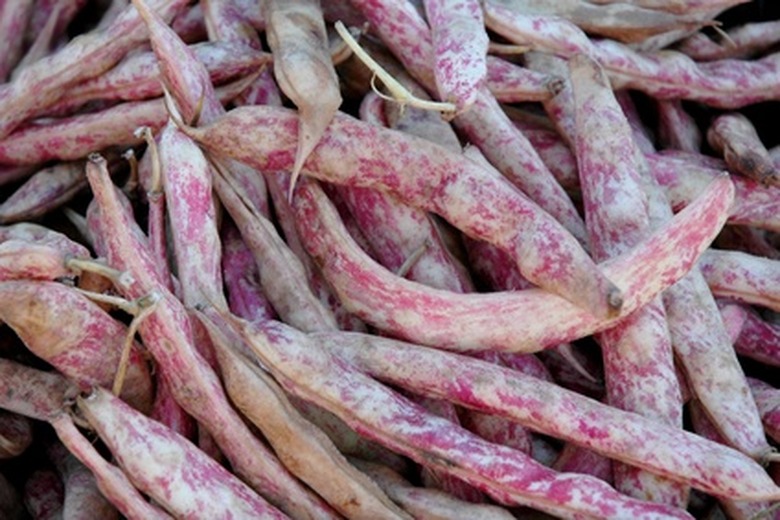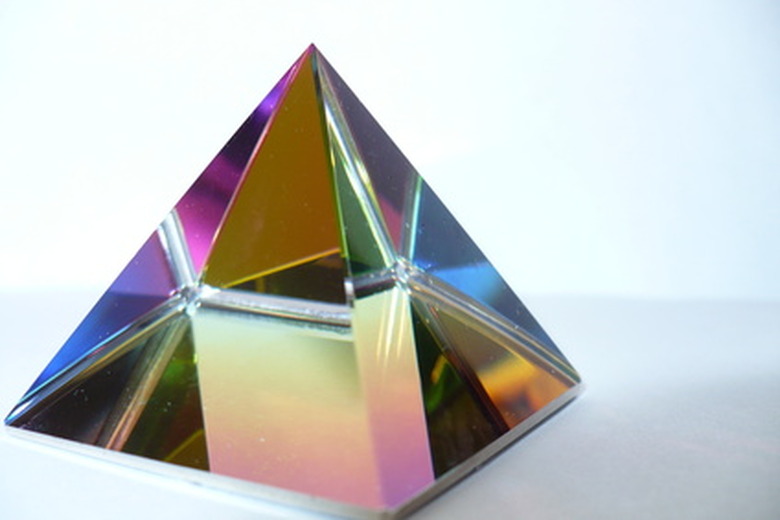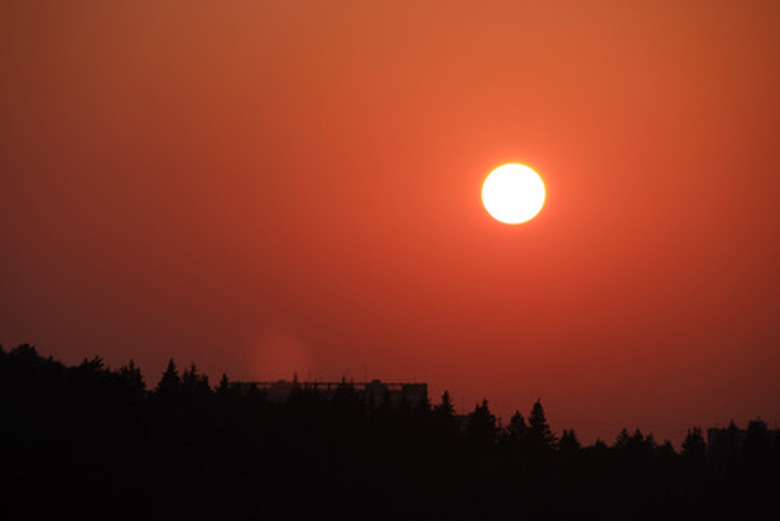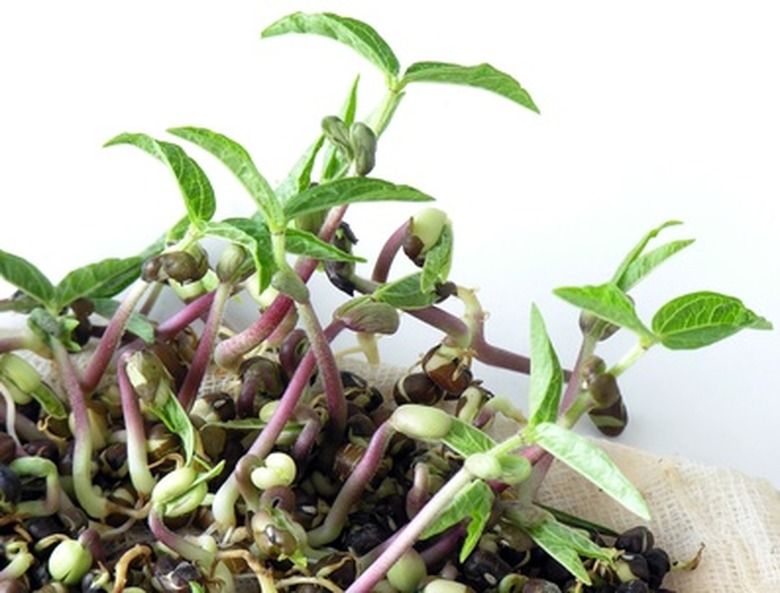The Effect Of Different Colors On A Bean Plant
Beans are amazingly prolific plants. Each bean produces a single stem, which can produce multiple flowers, all nearly certain to develop into pods of several more beans each. Being legumes, beans even supply their own nitrogen and make soil more fertile for the crops that follow them. Beans, therefore, need little in the way of nutrients. What they need most is light, in very specific wavelengths.
Beans and Photosynthesis
Visible light is just a small part of the whole electromagnetic spectrum. Plants have specialized organelles in their leaves, called chloroplasts, which contain molecules that can capture photons of energy from light to make food for the plant. This chemical reaction specifically takes six molecules of water and six molecules of carbon dioxide to produce a single molecule of glucose, which the plant can use. Six molecules of oxygen are also produced in the reaction, which is waste to the plant. Bean sprouts unfurl huge leaves right away because much glucose is needed for these fast-growing plants. It's not unusual for bean stems to grow 10 feet or more in a single spring and summer garden season.
- Beans are amazingly prolific plants.
- Being legumes, beans even supply their own nitrogen and make soil more fertile for the crops that follow them.
Beans and Blue Light
What humans perceive as color depends on the wavelength of that light. Shorter wavelengths look blue. Longer wavelengths look red. Chlorophyll, the photoreceptive molecule in plants that drives the photosynthetic reaction, captures the photons from the blue wavelengths best. Hence, early in their development, bean plants need copious amounts of blue light to achieve growth and leaf formation.
Beans and Red Light
Growth alone doesn't make the bean plant productive, and flowers aren't possible with just blue light. Certain proteins in the bean and other flowering plants called phytochromes react to longer light wavelengths and initiate bloom. When exposed to a specific amount of red light, phytochromes trigger hormonal responses that induce reproductive structures to form. Because each stem of a bean plant can grow several flowers continuously throughout the growing season, a steady supply of red light is necessary to ensure productivity.
- What humans perceive as color depends on the wavelength of that light.
- Hence, early in their development, bean plants need copious amounts of blue light to achieve growth and leaf formation.
Beans and Green Light
Beans are green all along their long stems and leaves, and there's a reason for that. The chlorophyll in them is green. And that's because green is the color most reflected by chlorophyll, not absorbed. In other words, most plants would fail to thrive, and even die, if the only light waves available to them were in the lengths that define green light.
Beans and Phototropism
A gardener who starts bean seedlings indoors in a sunny windowsill will quickly notice that the plants bend toward the light. Turn the pots 180 degrees and the bean plants will bend the other way within a day or two. This phenomenon is known as phototropism. Contrary to how it looks, phototropism is not the action of the plant bending toward anything, but rather the dark side of the plant stem is induced to grow faster than the side already exposed to light. Bean plants, being long, fast-growing stems, are particularly phototropic in nature, which optimizes their exposure to light and enhances their reproductive success.
- Beans are green all along their long stems and leaves, and there's a reason for that.
- Bean plants, being long, fast-growing stems, are particularly phototropic in nature, which optimizes their exposure to light and enhances their reproductive success.





